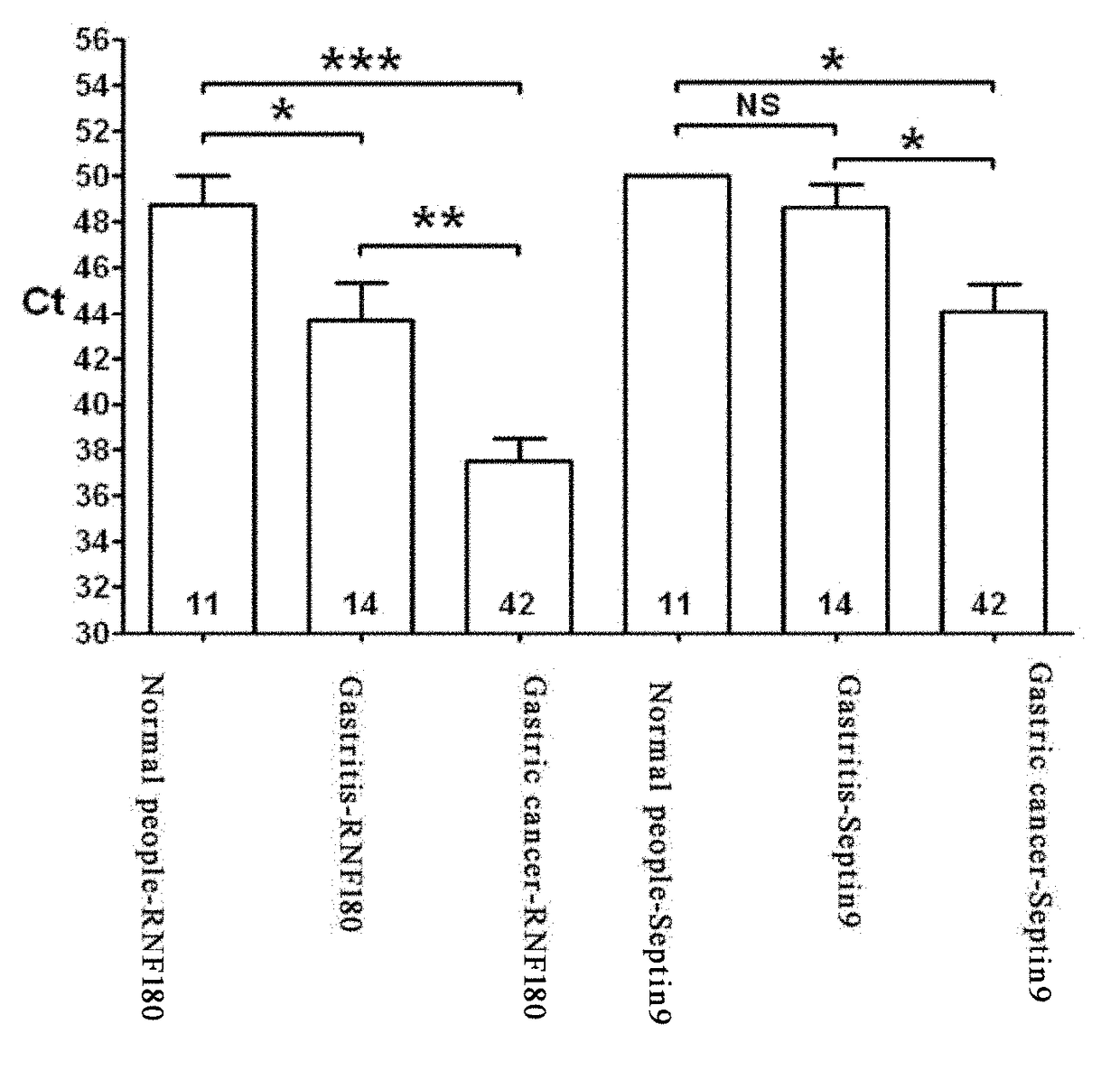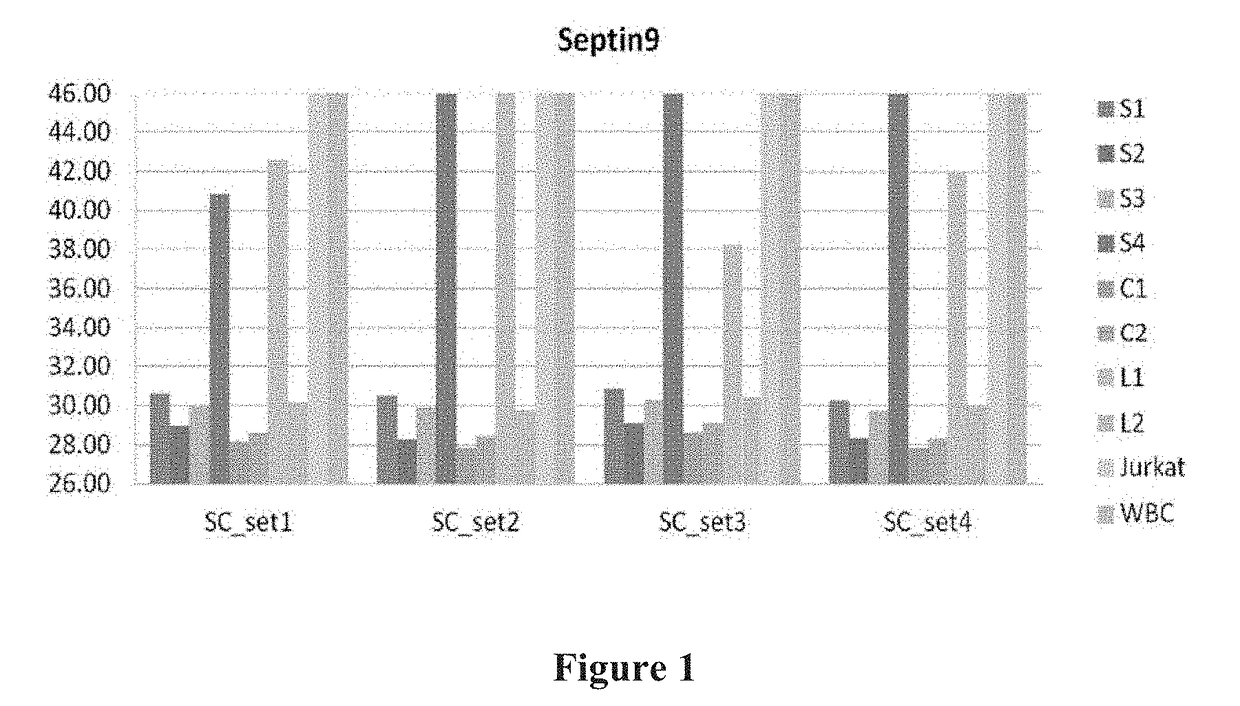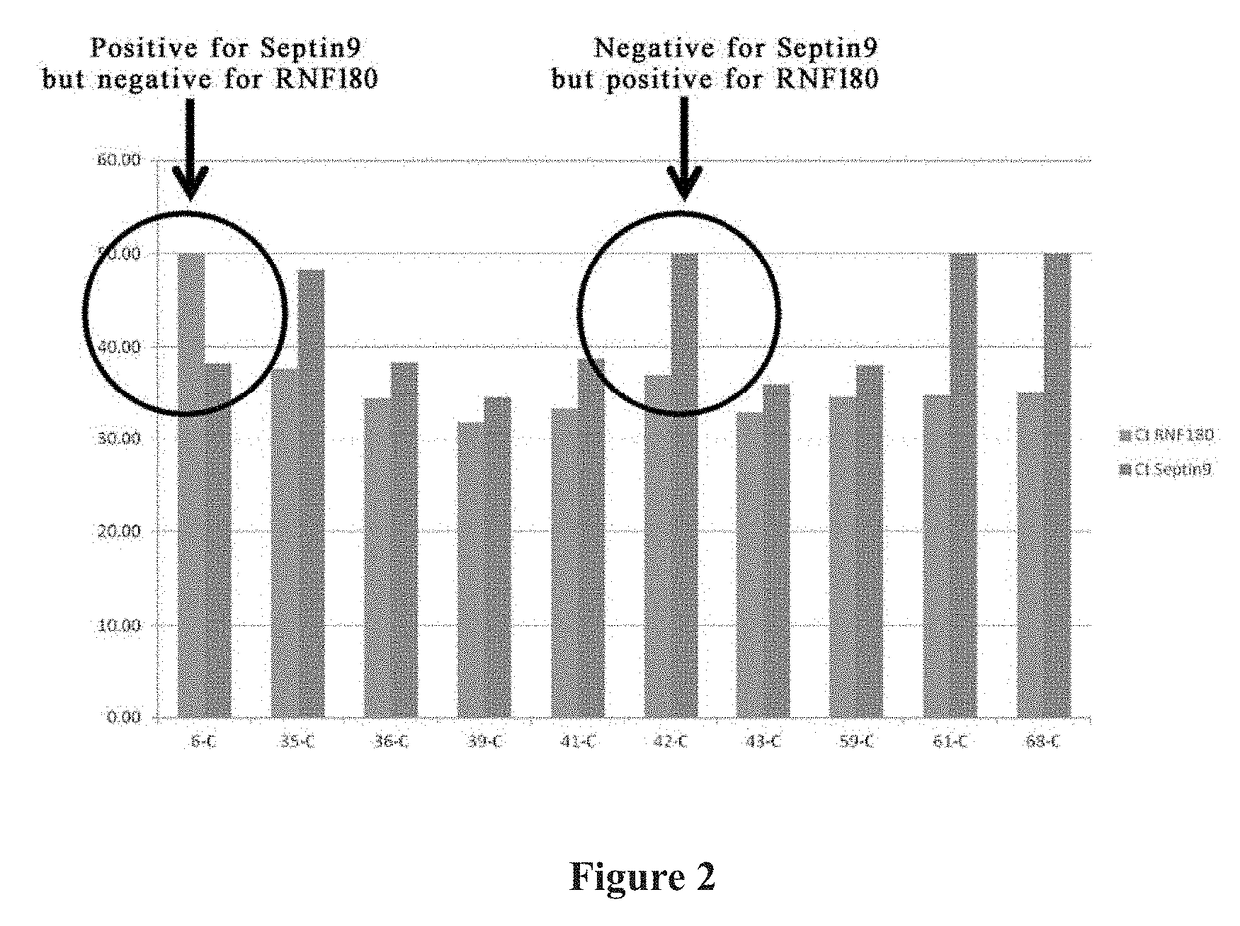Gene composition for detecting cell proliferative abnormality or grading disease degree and use thereof
a gene composition and cell proliferative technology, applied in the field of gene detection, can solve the problems of high morbidity and mortality, cancer, and major challenges for public health, and achieve the effects of improving the sensitivity or specificity of cancer detection, reducing the risk of cancer, and high efficiency and sensitivity
- Summary
- Abstract
- Description
- Claims
- Application Information
AI Technical Summary
Benefits of technology
Problems solved by technology
Method used
Image
Examples
example 1
of Primers and Probes
[0181]According to certain specific embodiments, the kit for measuring the methylation status of at least one CpG dinucleotide of the DNA sequence of Septin9 gene was purchased from Epigenomics AG (Germany). Therefore, the primers and probes for the experiment for Septin9 gene were obtained directly according to the instructions of the kit. For RNF180 gene, multiple sets of combinations of probes and primers can be designed, and each combination of the probes and primers may be different in the performance. The probes and primers were screened in the following examples.
[0182]In this example, the primers and probes for RNF180 were first screened with an artificially methylated template and an unmethylated template. The example includes the following steps:
[0183]First, various primers and probes for RNF180 were designed, provided that they are capable of being equivalent to, complementary to, or hybridize under moderately stringent or stringent conditions to at le...
example 2
ry Clinical Results of Multiple Detection of Methylated DNA of RNF180 and Septin9 in Plasma from Patients with Gastric Cancer
[0200]The samples were obtained from 10 patients with gastric cancer and 11 healthy people. The Genomic DNAs were extracted from the 10 patients with gastric cancer and 11 healthy people. All the cancer samples were obtained from BIOCHAIN Inc. The normal people sample was obtained from BioReclamation IVT Inc. The extraction of DNA can be carried out using any standard means in the prior art, and in particular, in this example, the DNAs of all samples were extracted by the EPi proColon Plasma Quick Kit of Epigenomics AG.
[0201]The genomic DNA samples were then pretreated such that 5′-unmethylated cytosine base was converted to uracil, thymine, or another base which is different from cytosine in terms of hybridization behaviour. In the example, this pretreatment was achieved by treatment with a bisulfite reagent. The DNA modification with bisulfite was carried ou...
example 3
f Gastric Cancer, Gastritis, and Normal People by Multiple Detection of Methylated DNA of RNF180 and Septin9
[0209]The example comprises the following steps:
[0210]First, the plasma was obtained from 42 patients with gastric cancer, 14 patients with gastritis, and 11 normal people. The Genomic DNAs were extracted from the patients with gastric cancer, patients with gastritis, and normal people. All the cancer samples were obtained from BIOCHAIN Inc. The normal people samples were obtained from BioReclamation IVT Inc. The Extraction of DNA can be carried out using any standard means in the prior art, and in particular, in this example, the DNAs of all samples were extracted by the EPi proColon Plasma Quick Kit of Epigenomics AG.
[0211]The genomic DNA samples were then pretreated such that 5′-unmethylated cytosine base was converted to uracil, thymine, or another base which is different from cytosine in terms of hybridization behaviour. In the example, this pretreatment was achieved by t...
PUM
| Property | Measurement | Unit |
|---|---|---|
| Composition | aaaaa | aaaaa |
| Biological properties | aaaaa | aaaaa |
| Level | aaaaa | aaaaa |
Abstract
Description
Claims
Application Information
 Login to View More
Login to View More - R&D
- Intellectual Property
- Life Sciences
- Materials
- Tech Scout
- Unparalleled Data Quality
- Higher Quality Content
- 60% Fewer Hallucinations
Browse by: Latest US Patents, China's latest patents, Technical Efficacy Thesaurus, Application Domain, Technology Topic, Popular Technical Reports.
© 2025 PatSnap. All rights reserved.Legal|Privacy policy|Modern Slavery Act Transparency Statement|Sitemap|About US| Contact US: help@patsnap.com



